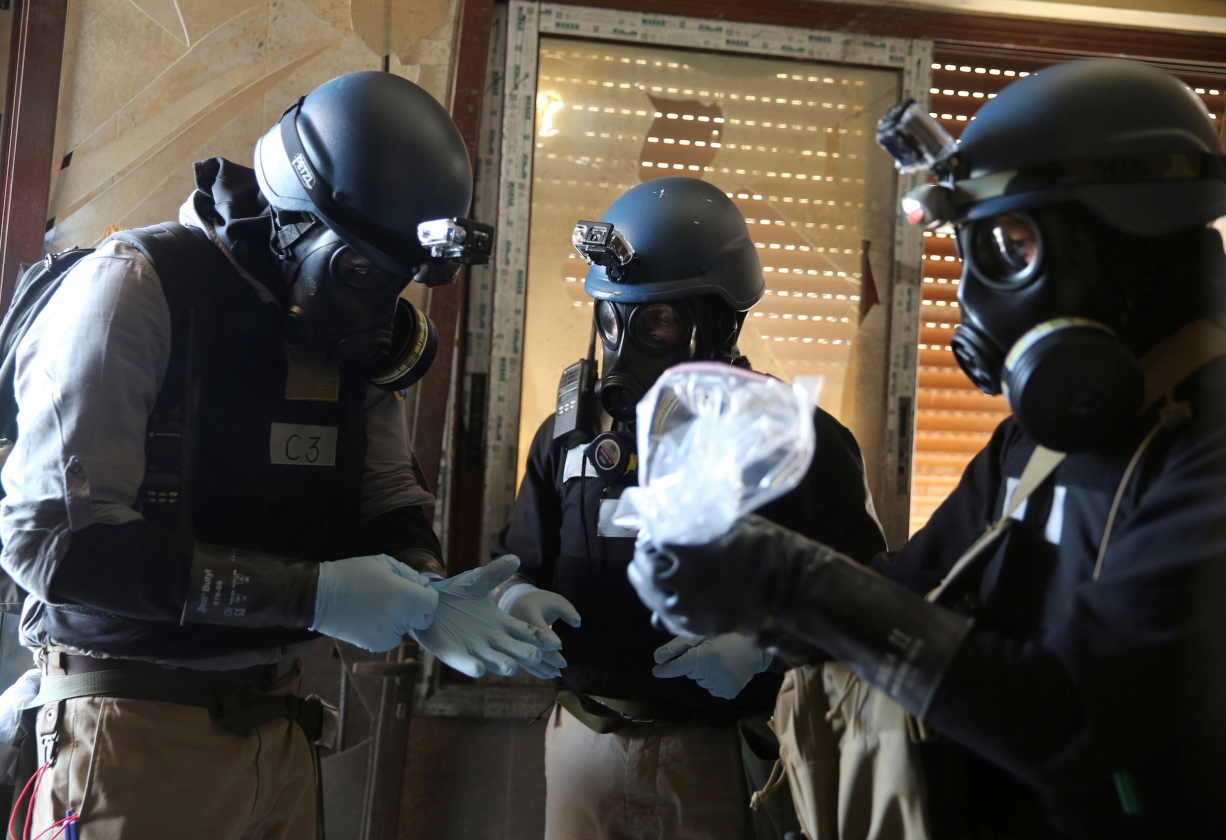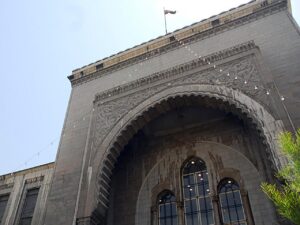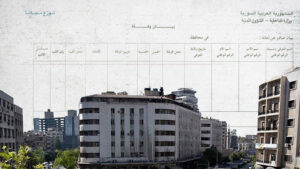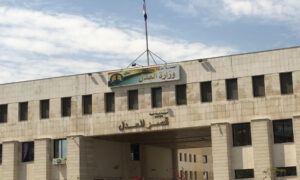Today marks the tenth anniversary of the chemical massacre in Ghouta. On August 21, 2013, both the eastern and western regions of Ghouta in Damascus experienced a chemical attack orchestrated by the Assad regime. This heinous act resulted in the tragic death of hundreds of civilians, predominantly women and children, due to suffocation from toxic gases.
On the night of August 21, 2013, the Syrian regime launched approximately four chemical weapon attacks on populated regions in the cities and towns of Eastern Ghouta and Moadamiyat al-Sham in Western Ghouta. These attacks deployed no fewer than 10 missiles filled with toxic Sarin gas. A significant portion, one-third of the victims, were women and children. This act reveals the Syrian regime’s intention to maximize casualties, as 1,144 individuals, including 194 women and 99 children, perished from suffocation.
Security Council Resolutions on Syrian Chemical Weapons
Security Council Resolution No. 2118, dated September 27, 2013, in relation to the Syrian chemical weapons and the massacre in Eastern Ghouta on August 21, 2013:
Article 3 endorses the decision of the Executive Council of the Organization for the Prohibition of Chemical Weapons from September 27, 2013. This decision entails specific measures to hasten the elimination of the Syrian Arab Republic’s chemical weapons program, ensuring its rigorous verification, and urges its immediate and secure implementation.
Article 4 mandates that the Syrian Arab Republic abstain from using, developing, producing, or possessing chemical weapons in any capacity. They must also avoid storing, retaining, or transferring chemical weapons, either directly or indirectly, to other countries or non-state entities.
Article 15 firmly advocates holding individuals accountable for the deployment of chemical weapons within the Syrian Arab Republic.
Article 21 warns that any failure to comply with the resolution, including unauthorized transfer or use of chemical weapons within the Syrian Arab Republic, will result in the imposition of measures under Chapter VII of the United Nations Charter.
By October 5, 2013, the Syrian regime altered the names of its units related to chemical weapons, indicative of an attempt to shift the narrative. The “Chemical Warfare Department” was renamed the “Chemical Prevention Department”, and the “Chemical Warfare College” became the “Chemical Prevention College”.
Security Council Resolution No. 2209, dated March 6, 2015:
This resolution condemns any employment of chemicals as weaponry in the Syrian civil war and issues a warning against the subsequent use of chemical weapons within the conflict.
Security Council Resolution No. 2235, dated August 7, 2015:
This granted approval for the establishment of a collaborative investigative mechanism to identify individuals, entities, and governments responsible for the utilization of chemical weapons in the Syrian conflict.
Decision of the Member States of the Organization for the Prohibition of Chemical Weapons:
On June 28, 2018, in The Hague, the member states adopted a mandate empowering the organization to identify those behind the chemical attacks in Syria. Prior to this, the organization’s role was merely to confirm the use of chemical weapons without determining the culprits. This decision was seen as a pivotal step towards holding accountable those who deployed chemical gases against civilians, especially after Russia ended the Joint International Investigative Mechanism’s operations on November 17, 2017.
Chemical Attack Data:
The Syrian regime is attributed with 169 chemical attacks from the Ghouta incident in August 2013 to the Khan Shaykhun attack in April 2017. There were an additional 14 attacks from the Khan Sheikhoun incident in April 2017 to the two strikes on Douma in April 2018.
Pertinent Details of the Ghouta Attacks:
The timing was strategic, ensuring optimal air circulation and temperatures for maximal dispersal of toxic gases.
An estimated 13 missiles were discharged using specialized launchers, indicating a deliberate intent to inflict maximum casualties and instill profound shock within Syrian society, pushing it towards submission and a degrading return to authoritative rule.
The Ghouta chemical attack resulted in the tragic death of approximately 1,127 individuals, including 107 children and 201 women, and left nearly 5,935 injured.
In conclusion, through its use of chemical weapons, the Syrian regime has breached customary international humanitarian law, the Chemical Weapons Convention, and all pertinent Security Council resolutions, particularly Nos. 2118, 2209, and 2235. The use of these weapons is categorized as a war crime under the Rome Statute of the International Criminal Court.
The Role of the Organization for the Prohibition of Chemical Weapons in the Syrian Context:
In August 2015, the international community secured UN Resolution 2235, which established a joint investigation mechanism between the Organization for the Prohibition of Chemical Weapons (OPCW) and the United Nations. This mechanism aimed to ascertain responsibility for the chemical attacks in Syria.
This joint mechanism determined that the Syrian regime was responsible for three chlorine gas attacks in Idlib (Sarmin, Qaymanas, and Talmenes). However, it did not address the 2013 Ghouta massacre, which involved the use of sarin gas. The committee’s tenure was extended twice despite significant obstacles posed by the Russians. Its operations concluded after attributing the Khan Sheikhoun chemical attack in 2017 to the Syrian regime. Russia rejected these accusations and exercised its veto right, effectively terminating the committee’s work.
In July 2019, a special team for the OPCW was constituted. This team was the first investigative body empowered to identify the perpetrators of chemical attacks in Syria and could formally charge those responsible. In its inaugural report released in early April 2020, the Investigation and Identification Team (IIT) held the Syrian regime accountable for three chemical attacks using sarin gas and toxic chlorine in the town of Latamneh, Hama, in 2017. Like the previous committee, this team did not address the Ghouta attacks of 2013.
The IIT released its second report, which highlighted the Syrian regime’s involvement, particularly the Russia-backed “Tiger Forces” led by Brigadier General Suhail al-Hassan, in deploying chlorine gas in Saraqib in 2018.
The report and the recurrence of these findings led the member states to vote on suspending the Syrian regime’s membership in the organization. More than half of the 193 state parties to the agreement voted in favor of freezing the regime’s membership.
The continuous condemnation of the regime by the OPCW signifies a crucial step towards accountability. It serves as a persuasive tool, encouraging state parties to the convention to make decisive resolutions that uphold the integrity of the convention, ensure perpetrators are held accountable, and prevent impunity.
Justice Mechanisms in the Case of Chemical Weapons Use:
Reports of the Joint Investigation Mechanism under Resolution 2235 of 2015:
The mechanism probed five attacks in Syria. It confirmed the Syrian regime’s responsibility for four chlorine gas attacks in Idlib (Sermin, Qimnas, Talmans), and the Khan Shaykhun chemical assault in 2017. Notably, the 2013 Ghouta massacre wasn’t mentioned.
The Joint Investigation Mechanism’s report condemning the Syrian regime for the Khan Sheikhoun attack is pivotal due to:
Its origin from a UN-sanctioned entity, established under Security Council Resolution 2235 of 2015—a resolution Russia endorsed.
The mechanism’s immediate access to victims (witnesses) and samples (urine, blood, hair) post-attack.
Overwhelming evidence implicating the Syrian regime in the chemical attack.
Russia exercised its veto power, halting the mechanism’s efforts following the release of the Khan Sheikhoun report.
Ideally, the Khan Sheikhoun case would proceed via international channels—from the OPCW’s Executive Council to the UN Secretary-General, and then to the Security Council for ICC referral. However, Russia’s veto, even in light of Resolution 2235 of 2015, impeded this pathway.
To counteract the Russian veto, the international community sought alternatives, culminating in the European Union’s backing of the International, Neutral, and Independent Mechanism (IIIM). This mechanism compiles criminal files, meeting international standards, for potential prosecution in countries endorsing the universal jurisdiction principle, like Germany, France, and Sweden.
Collaboratively, Syrian human rights bodies and international organizations have initiated legal actions in countries practicing universal jurisdiction, such as Germany, France, and Sweden. These countries have received substantial evidence pertaining to major incidents, including Khan Sheikhoun 2017 and Al-Lataminah 2017.
However, this approach has limitations:
Evidence must satisfy strict criteria to substantiate a criminal case.
Universal jurisdiction often targets lower-level culprits, not the orchestrators or high-ranking officers.
The OPCW’s Endeavors in Syria:
The Investigation and Identification Team (IIT) was mandated by 192 OPCW member states, albeit with opposition from Russia, Iran, and allies of the Syrian regime.
The team’s reports identified:
The Syrian regime’s involvement in three chemical attacks in Al-Lataminah, Hama, in 2017.
The Syrian regime’s (specifically the “Tiger Forces”) usage of chlorine gas in Saraqib in 2018.
In light of these reports, member states voted to suspend the Syrian regime’s OPCW membership. This act was symbolic, emphasizing the regime’s international isolation.
Regarding site inspections, the Syrian regime is expected to cooperate with the announcement and publication team (established by Resolution 2118 of 2013). However, they desire the OPCW to treat everything as a unified case, seeking to absolve Syria of all chemical weapon-related offenses.
The OPCW anticipates non-cooperation from the Syrian regime, particularly with 21 site inspections. Following the membership suspension, the OPCW member states must urge the General Assembly to mandate the Syrian regime’s compliance.
The Importance and Role of Human Rights Civil Society Organizations in the Justice File:
It’s imperative to understand that our confrontation with the regime is rooted in human rights and legal battles, which are prolonged due to the lack of a political resolution to the Syrian crisis and the need to manage expectations regarding outcomes. These organizations should focus on:
Capacity Building: Train individuals to craft a criminal file in line with international criminal standards. This is crucial to counter attempts by the regime and Russia to erase these crimes and their evidence. Purposeful documentation is essential. We need clarity on why we’re documenting and what our documentation aims to prove.
Documentation Planning: This includes evidence collection, preserving the chain of custody, understanding the context of crimes, identifying the violations to prove, and recognizing patterns of criminal responsibility.
Standards for Documentation: Investigations should uphold the principle of a victim-based approach, risk assessments, objectivity, impartiality, logistical considerations, and finance needs. Organizing the collected information and interviewing witnesses or victims is vital.
- Collaboration: Engage continuously with international organizations such as the Organization for the Prohibition of Chemical Weapons and the International, Neutral and Independent Mechanism (IIIM). These organizations offer the current best methods for building criminal files that adhere to international criminal standards.
- Legal Advocacy: The Association of Free Syrian Lawyers commemorated the ninth anniversary of the chemical massacre with a symposium titled: “9 years…a free criminal and a helpless international community.
We will continue until justice is achieved.” This advocates for the legal and moral accountability of the Security Council, the General Assembly, and the international community. They failed to protect Syrians, hold the Syrian regime accountable, and achieve justice for the Syrian people. Legal cases should be distinct from advocacy due to the diverse nature of information, the need to maintain confidentiality, and the preservation of evidence. - Pressure on Allies: Allies of the Syrian revolution should be urged to act outside the Security Council. The General Assembly might provide a route for a resolution to be passed onto the International Criminal Court, especially with the precedent of the “Uniting for Peace Resolution” (5/377) adopted on 3/11/1950.
- Isolation Efforts: Work towards increasing the isolation of the Syrian regime and its allies: Russia, China, and Iran. This can be achieved through consistent human rights reporting and engagement with the Human Rights Council’s special procedures and Universal Periodic Review, highlighting the regime’s ongoing violations against the Syrian people.
Considering the international consensus against a military solution and the lack of a foreseeable political solution—especially with the regional political complexities—it’s vital for the active countries in the Syrian dossier to earnestly implement Security Council Resolution 2254 of 2015. This aims for a political transition, which Syrians have desired since their uprising against this oppressive regime and its security apparatus that has dominated Syria for over 50 years. Achieving this transition would respect and preserve the freedom and dignity of the Syrian people, ensure transitional justice, conduct judicial prosecutions, establish truth commissions, ensure fair accountability, and provide compensation for victims. All these efforts should culminate in a legally-elected Syrian state that truly embodies the will of its people and establishes a social contract for a Syria that embraces all its citizens.





